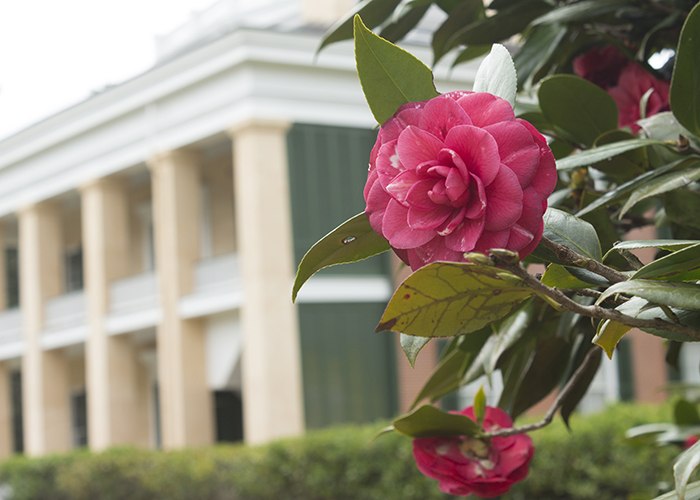 More 2019 Adventures |
New Orleans, LA → Jackson, MS 477.0 mi (767.7 km) |
 Next Day |
How d’ya do, everyone?!
After exploring Texas last year, I’m continuing my adventures through the American South! Today, I’m heading north from New Orleans to explore its Magnolia neighbor, Mississippi, home to two (checks notes) three parks and monuments on my list! The first of my stops on this trip would be a spot with a rich history and a mysterious name: Natchez National Historical Park!
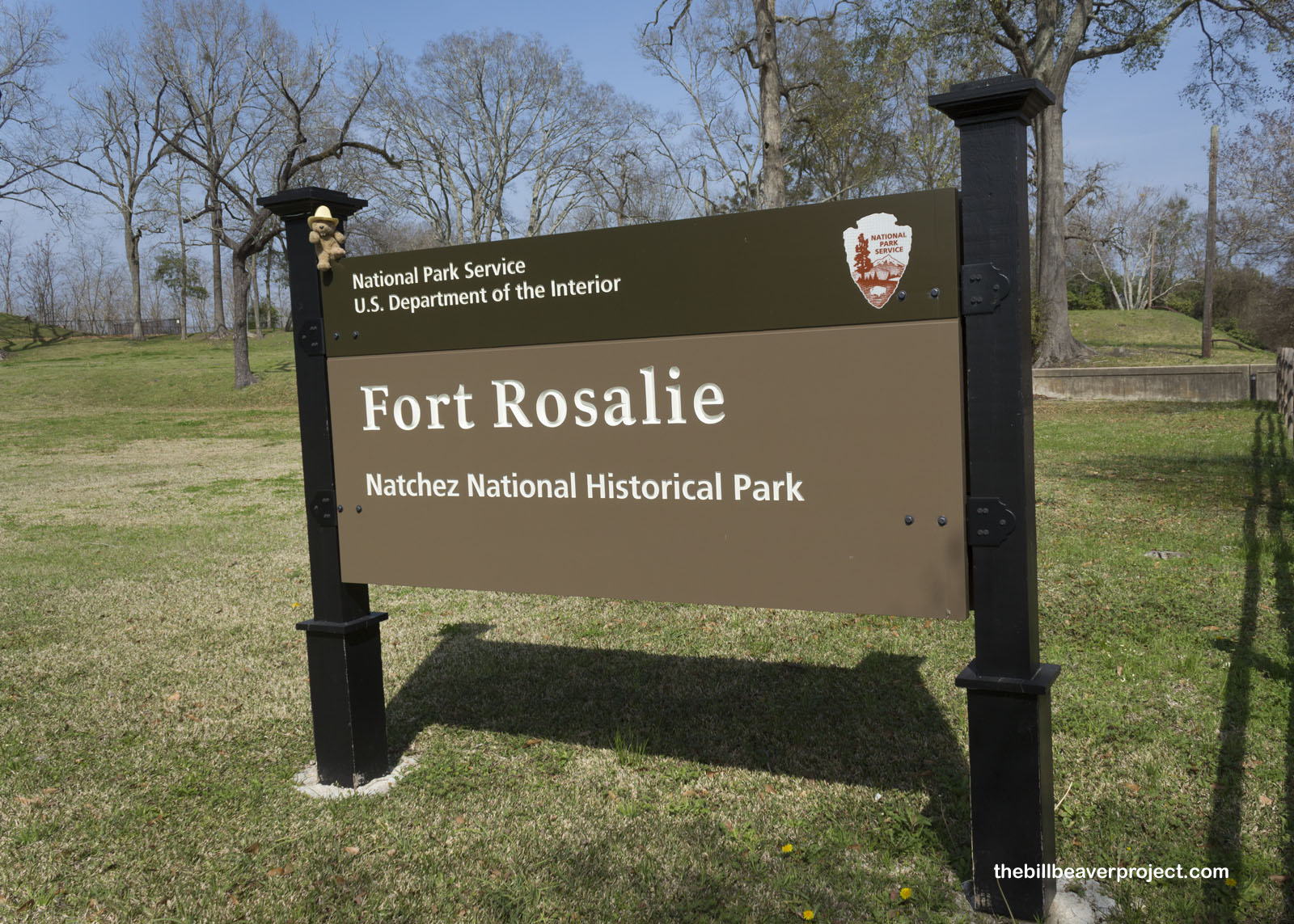 |
What makes “Natchez” such a tricky name to newcomers is that it looks like it could be pronounced the Spanish way “Nat-chez,” or the French way, “Nat-chay,” but its origin is actually with the Natchez tribe, who were here first! They farmed the three sisters along the river banks and built earth mounds from about AD 700 until 1716, when the French arrived, bringing slaves and war.
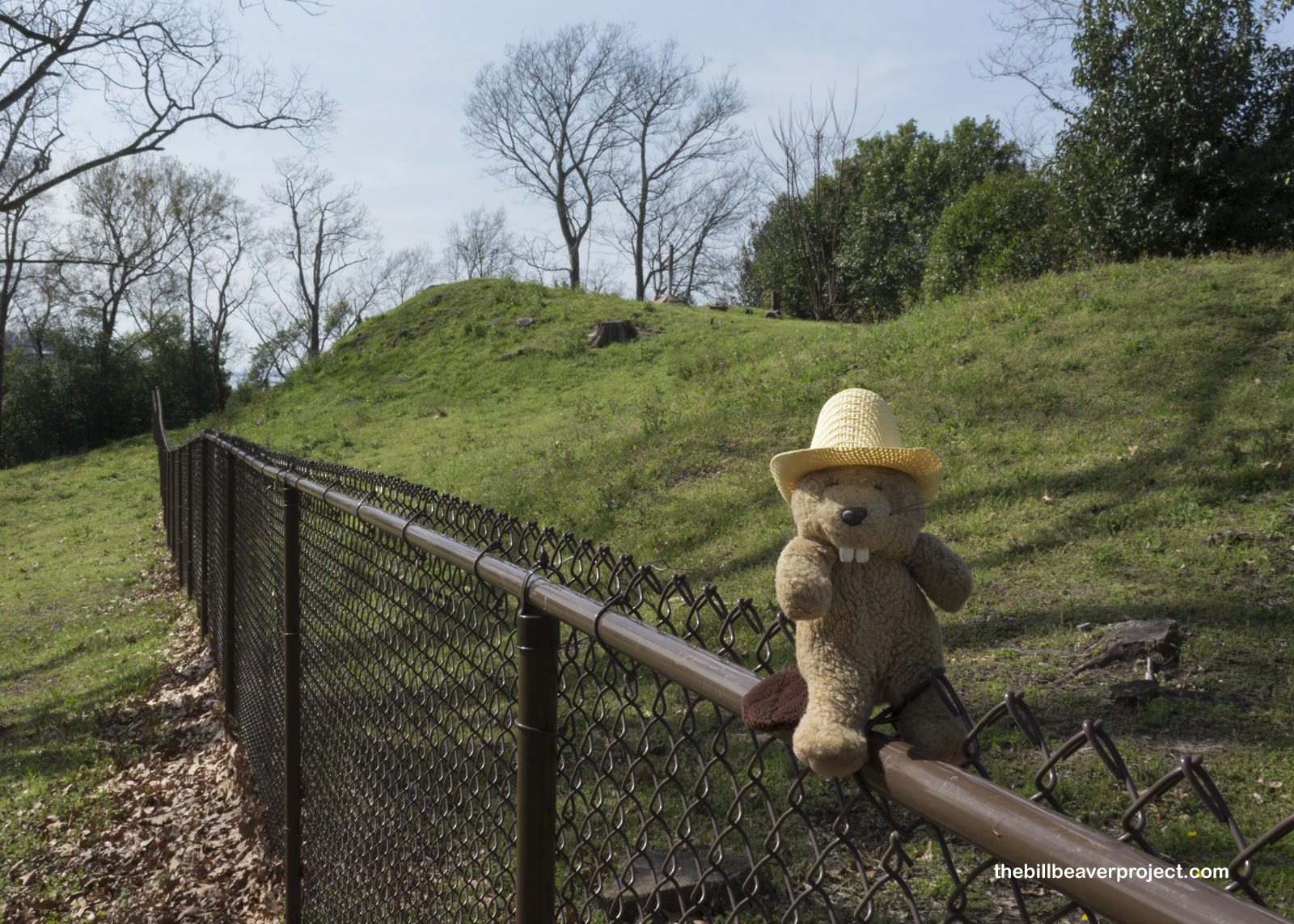 |
Fort Rosalie, now little more than a mound itself, was the first French installation here. It was meant to be their main fortification of the Mississippi River, but after a Natchez rebellion in 1729, it became the refortified hub by which the French completely eliminated the Natchez from their ancestral home. More wars brought more changing of hands, first to the British after the French and Indian War in 1763, then to the Spanish after the American Revolution in 1783, and then to the United States with Pinckney’s Treaty in 1795!
 |
Today, this rich cotton production area is a historical park featuring Fort Rosalie as the remnant of European colonization and two other historical sites from the American era. The first is the home of William Johnson, who started life as a slave but gained his freedom at the age of 11. Not only did Mr. Johnson become a barber of great renown, but he also kept a detailed diary for about sixteen years, which paints a great picture of a life hunting, fishing, and betting on horses in Antebellum Natchez! It also describes the complexity of a former slave who himself owned sixteen slaves!
Sadly, the Barber of Natchez was shot in a dispute with his neighbor, and due to a technicality that said black folks could not testify against white folks in criminal court, the defense ruled that the killer was actually white, and the lone witness in the case could not testify against him!
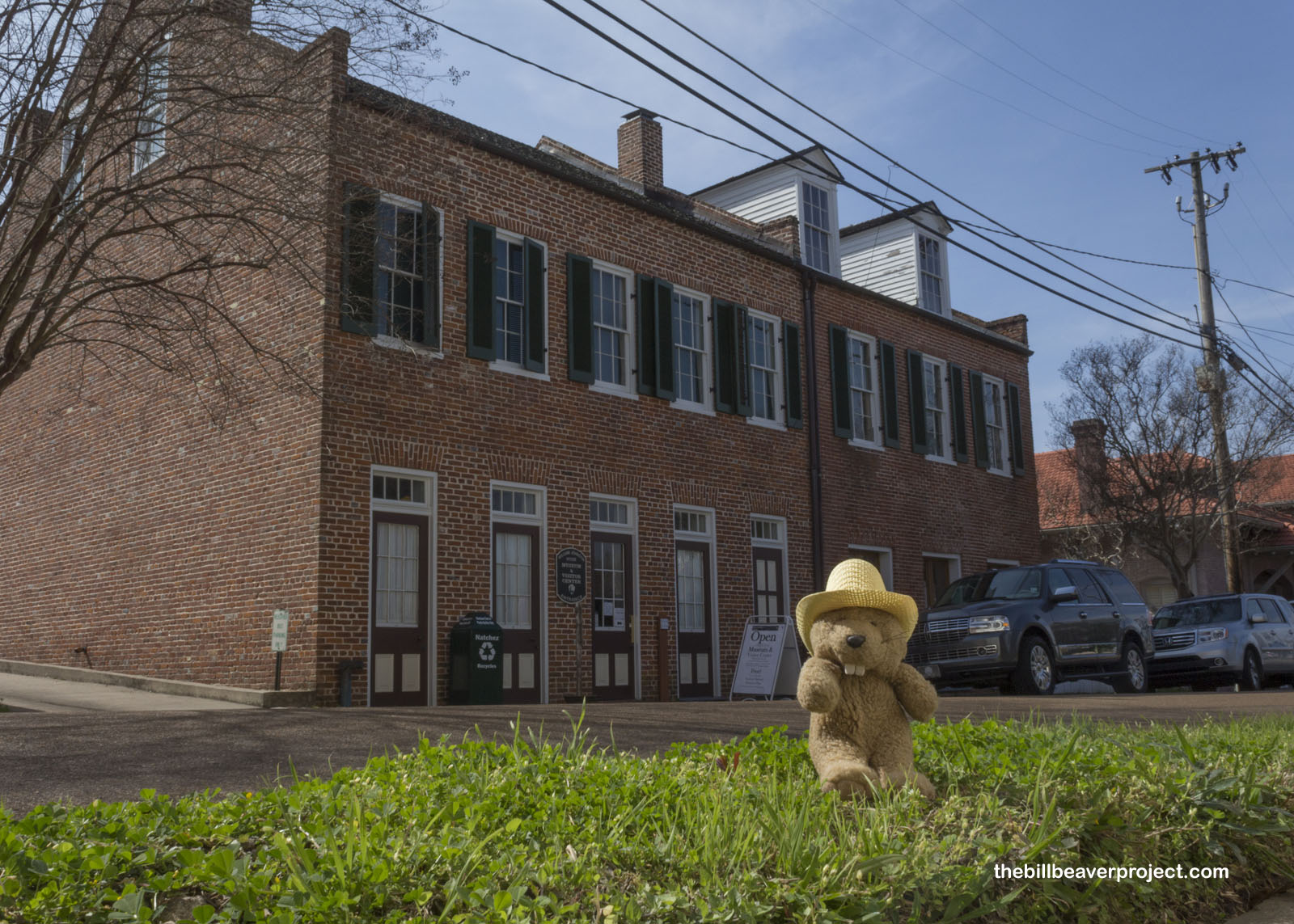 |
Though Natchez resisted joining the Confederacy and led the nation in political involvement for African-Americans after the Civil War, slavery remains a big part of its history. That’s captured at the third part of Natchez National Historical Park, Melrose Plantation, which has some of the last remaining slave homes in Natchez.
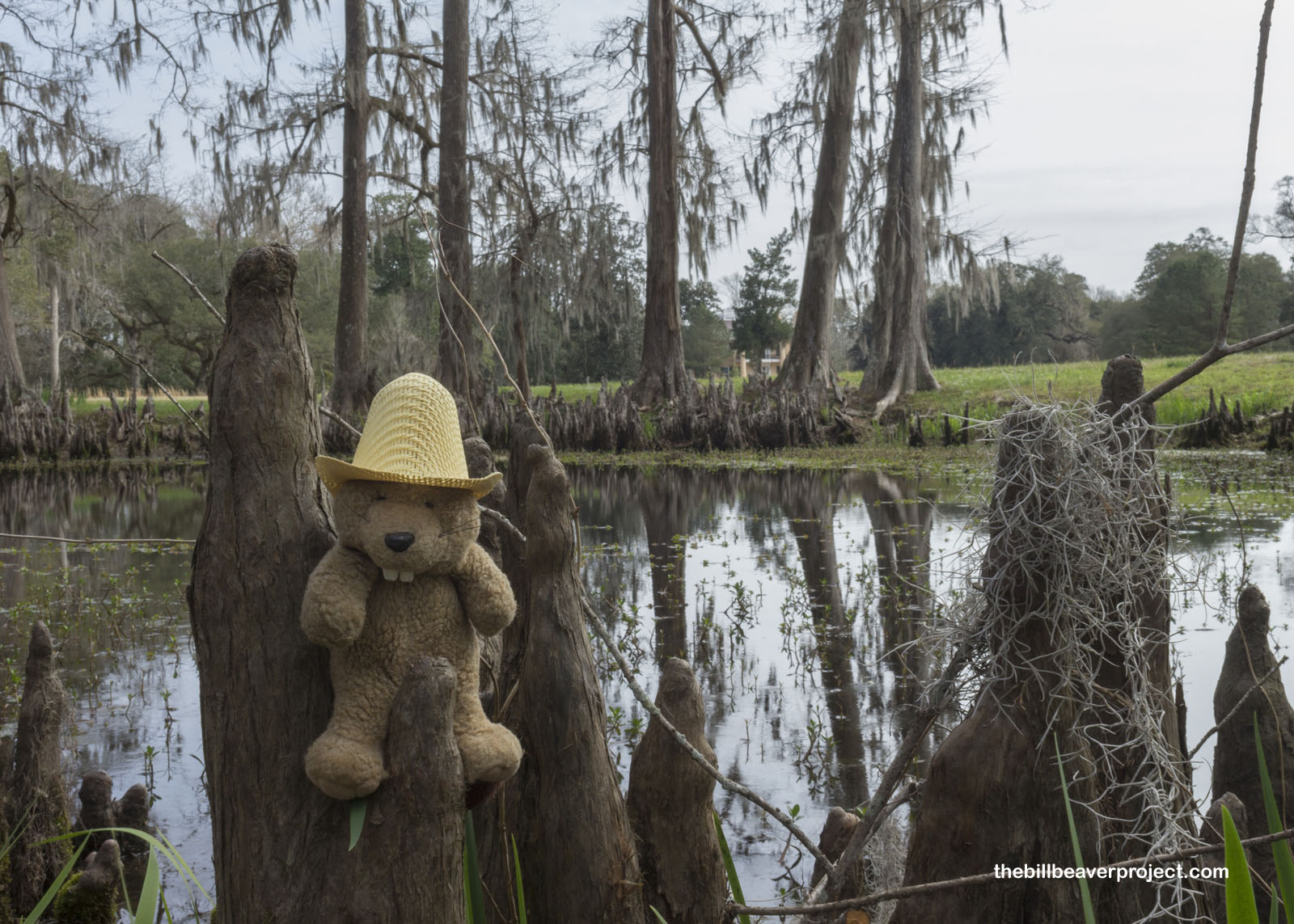 |
The main Greek Revival home of John McMurran and his family took eight years to complete and is the last verified work of architect, Jacob Byers! Named “Melrose” after a beautiful town in Scotland, it’s Mississippi’s most intact antebellum plantation!
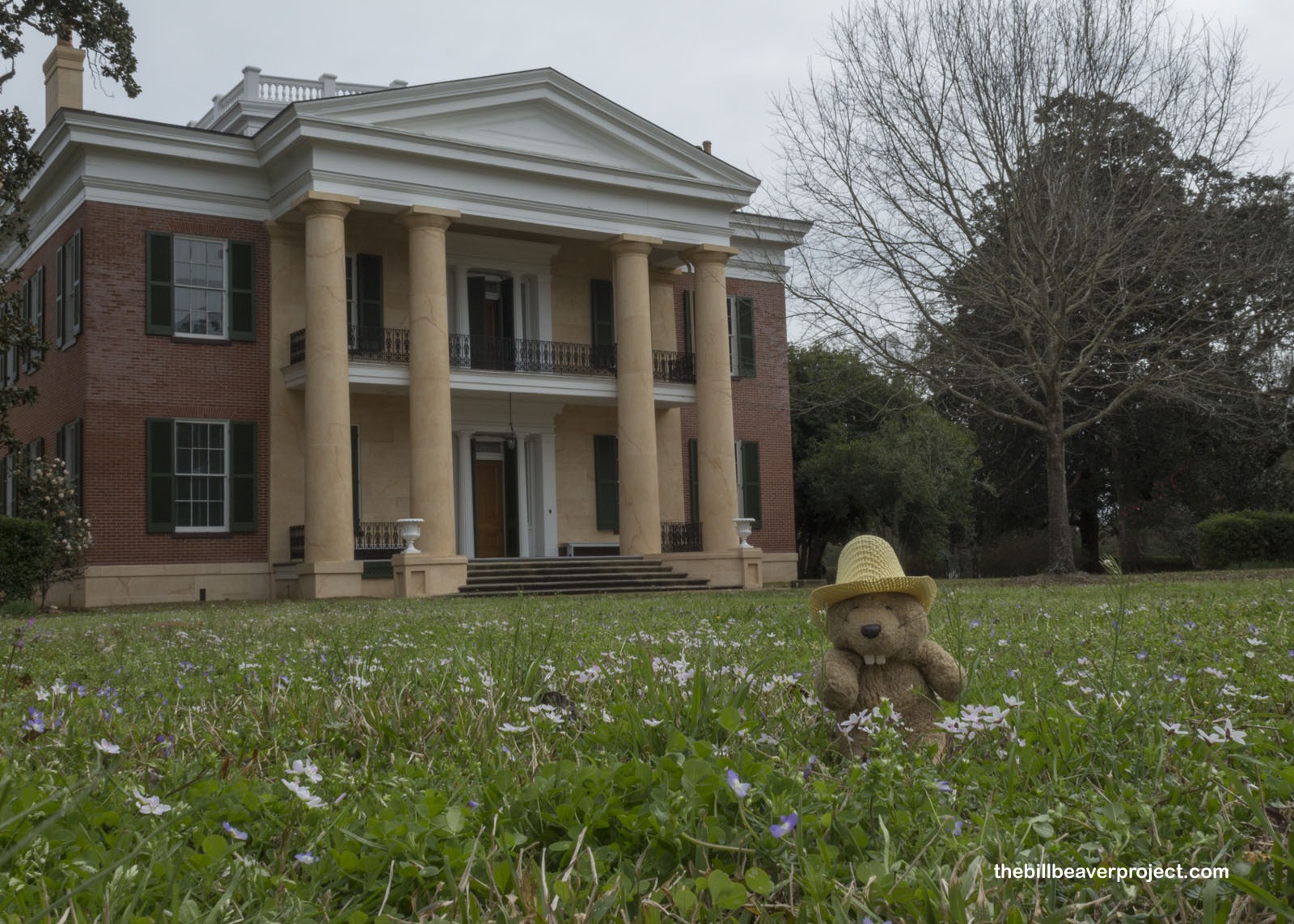 |
Mr. McMurran, a native of Ohio, ended up owning or investing in five plantations to the tune of 9,600 acres of cotton-picking, camellia-blooming land! It stayed this way for almost twenty years until the Civil War hit. Opposite his northerner father, John Jr. actually started on the Confederate side, but after a medical discharge, he wound up as a clerk for the Union Army!
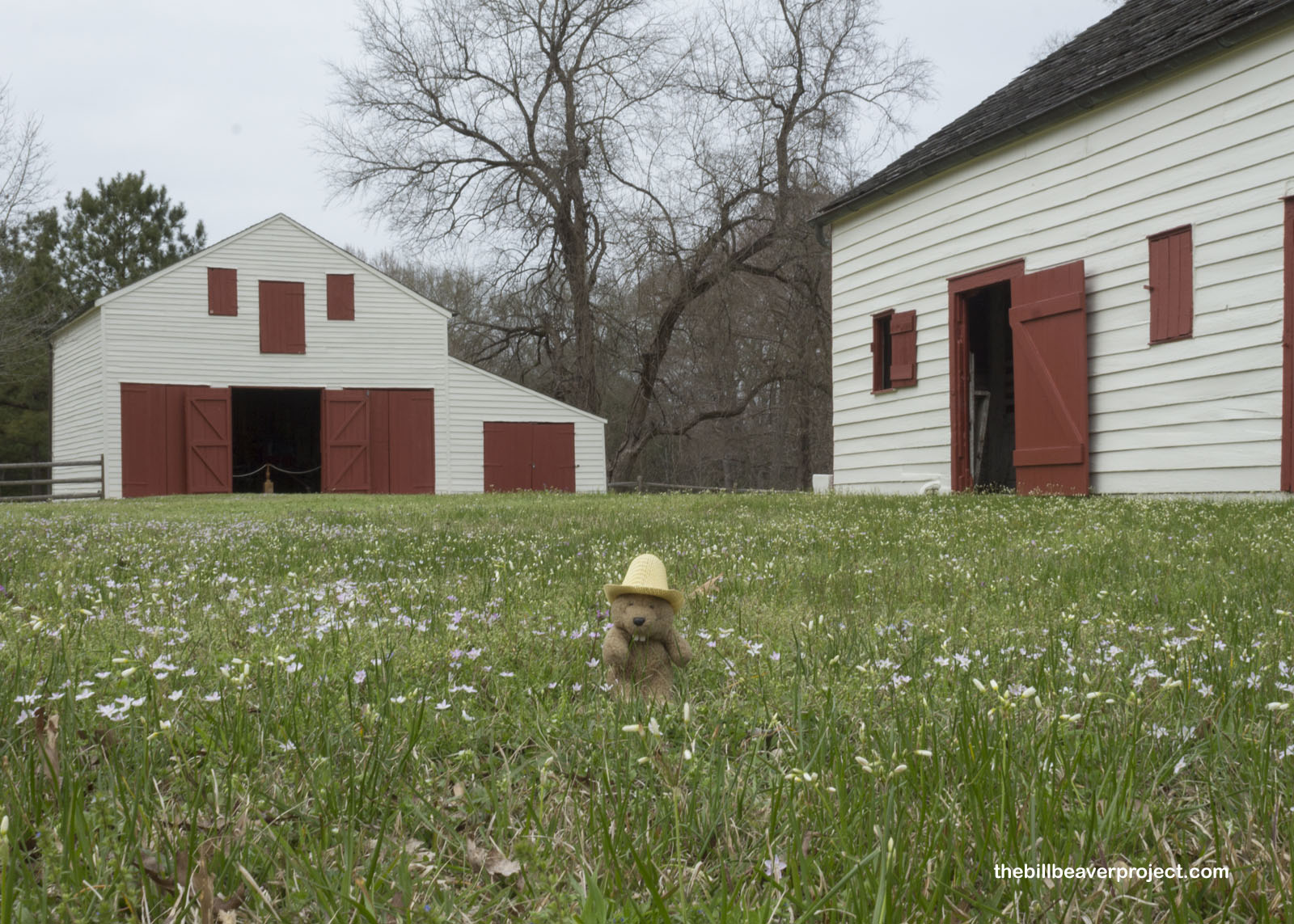 |
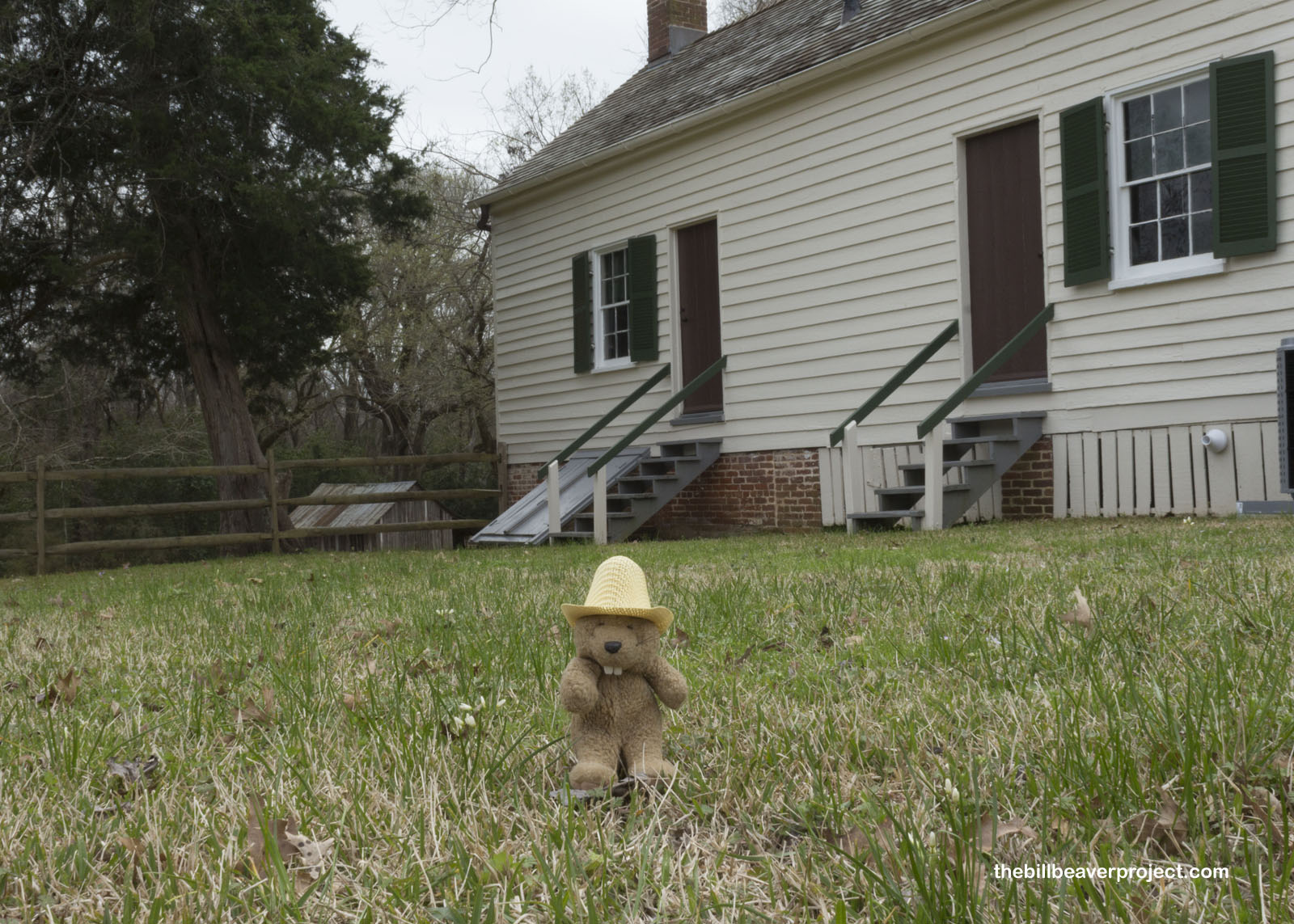 |
As it was for most plantation owners, the war and the collapse of the Confederate economy were a disaster for the McMurrans. They sold Melrose to a woman named Elizabeth Davis and tried to move to Maryland, only to lose John, Sr. in a steamboat accident. Their story, like many in the south, is one of great fortunes gone with the wind (of change)!
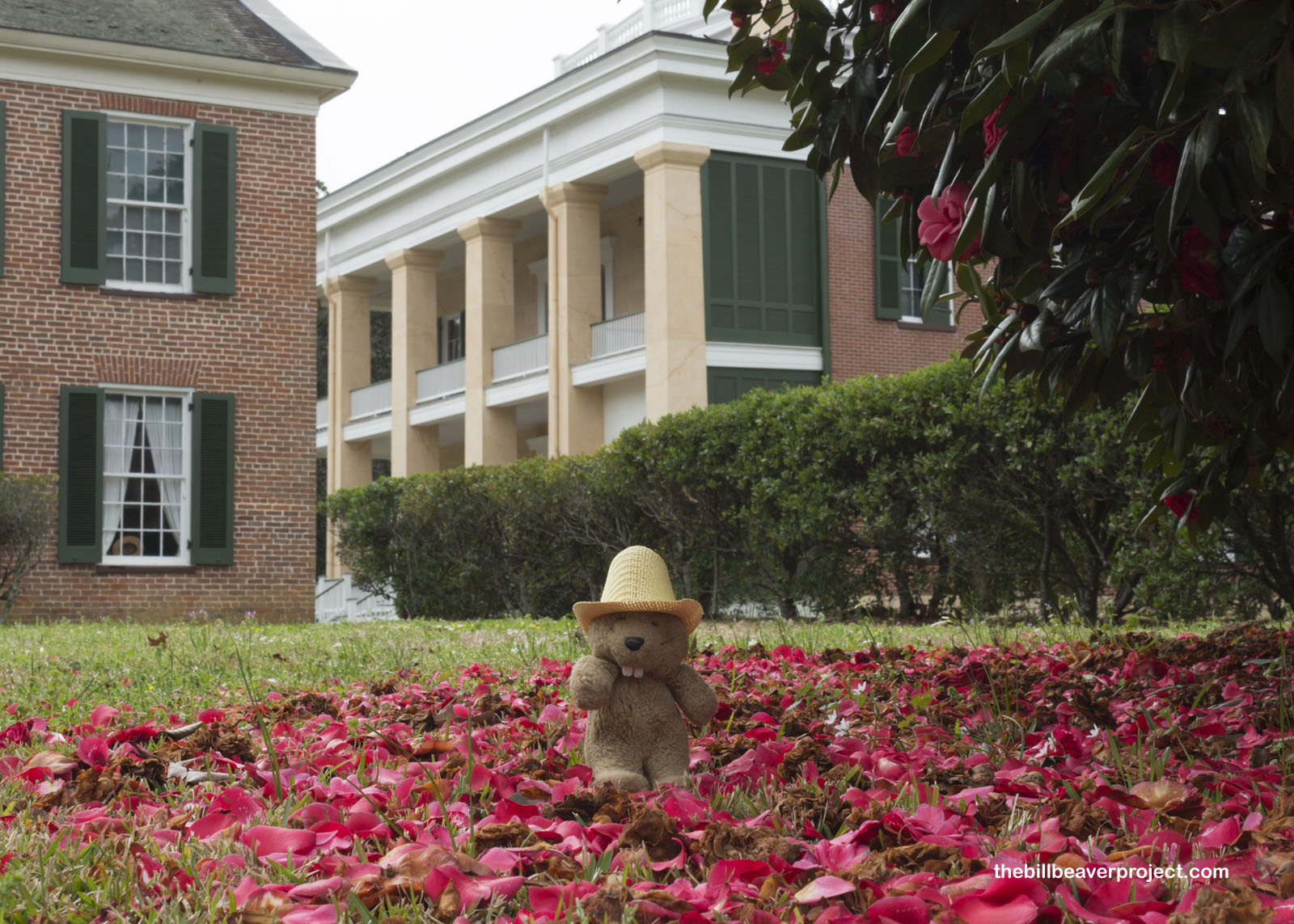 |
Despite the tragic fate of the McMurrans, Union control of Mississippi was essential for bringing the war to a close! About an hour north of Natchez, Vicksburg National Military Park tells this story!
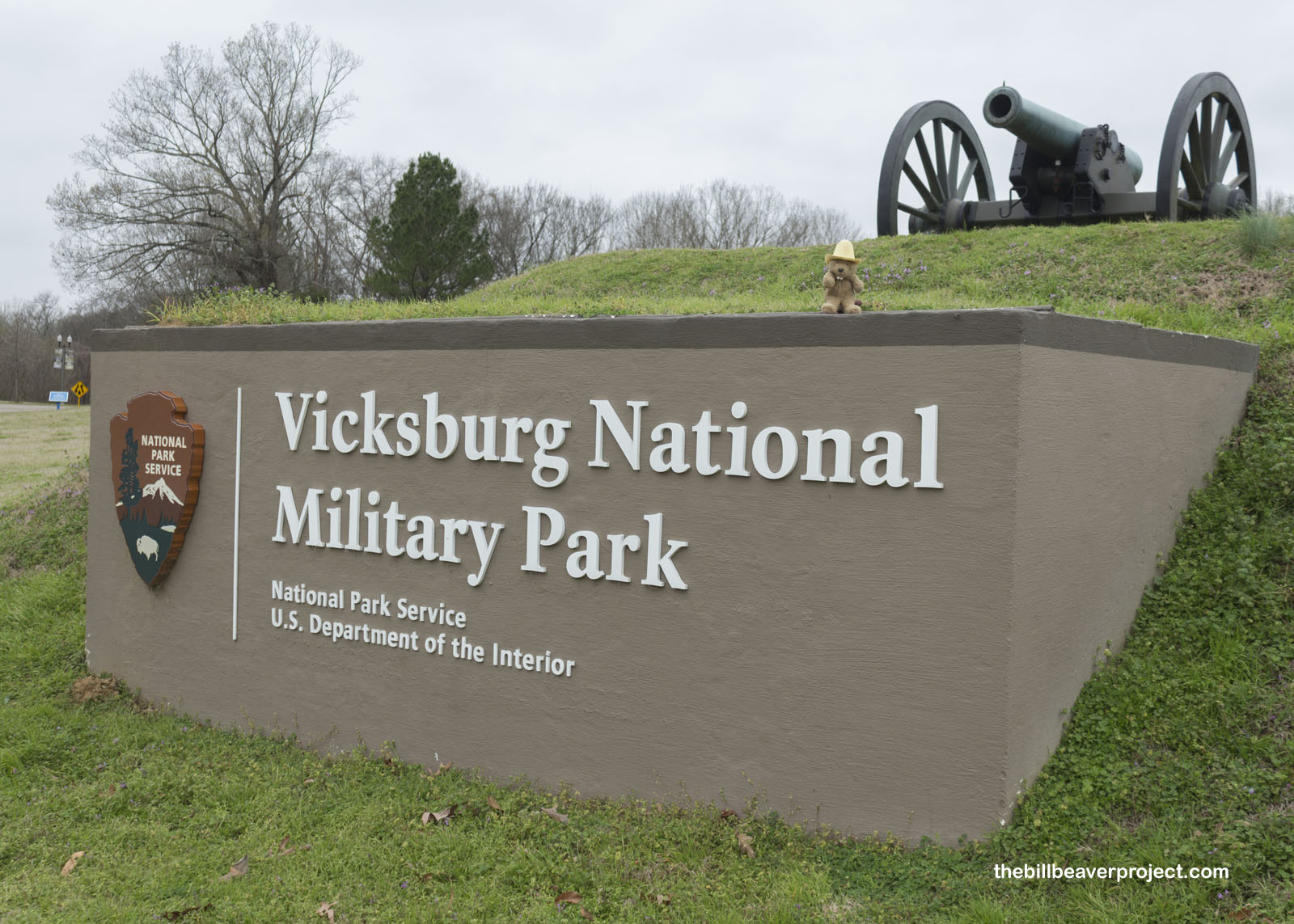 |
Like Gettysburg, Vicksburg is a collection of monuments to the Union and Confederate actions during this battle, the “key” as Abraham Lincoln put it. See, the Mississippi River is huge, and because it’s so huge, it’s long been a valuable shipping lane. The Confederate Army controlled it from Cairo, Illinois all the way south, and they used it to supply their eastern troops with soldiers, food, and weapons they funneled through Mexico! Losing this port city, as part of General Winfield Scott’s Anaconda Plan, would be a crushing blow!
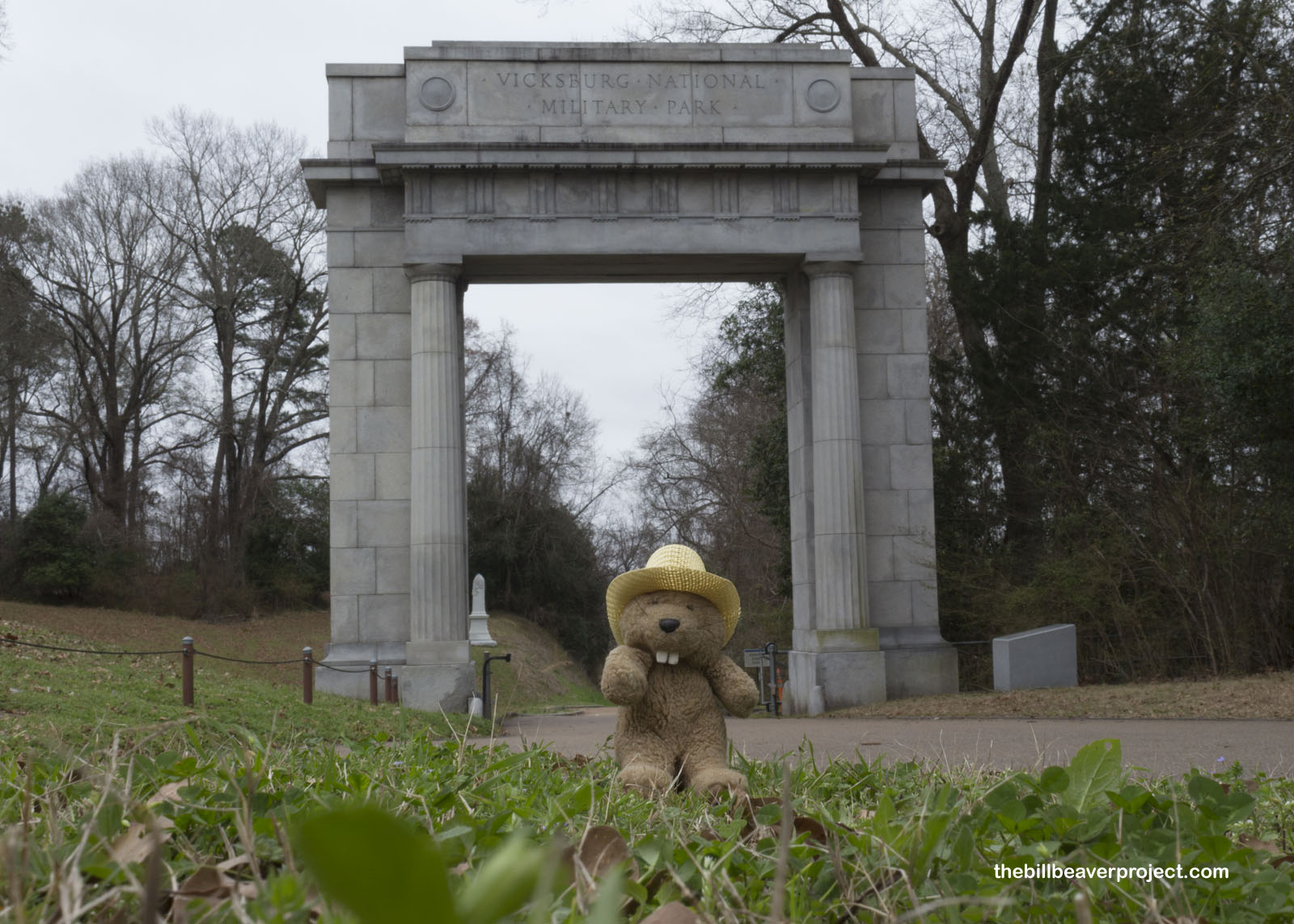 |
Road closures kept me on the Union side of the park, but the monuments, such as the 90-foot obelisk honoring the troops from Minnesota, started off pretty spectacularly! There were four divisions from Minnesota: the third, fourth, and fifth infantries, and the first battery of the light artillery!
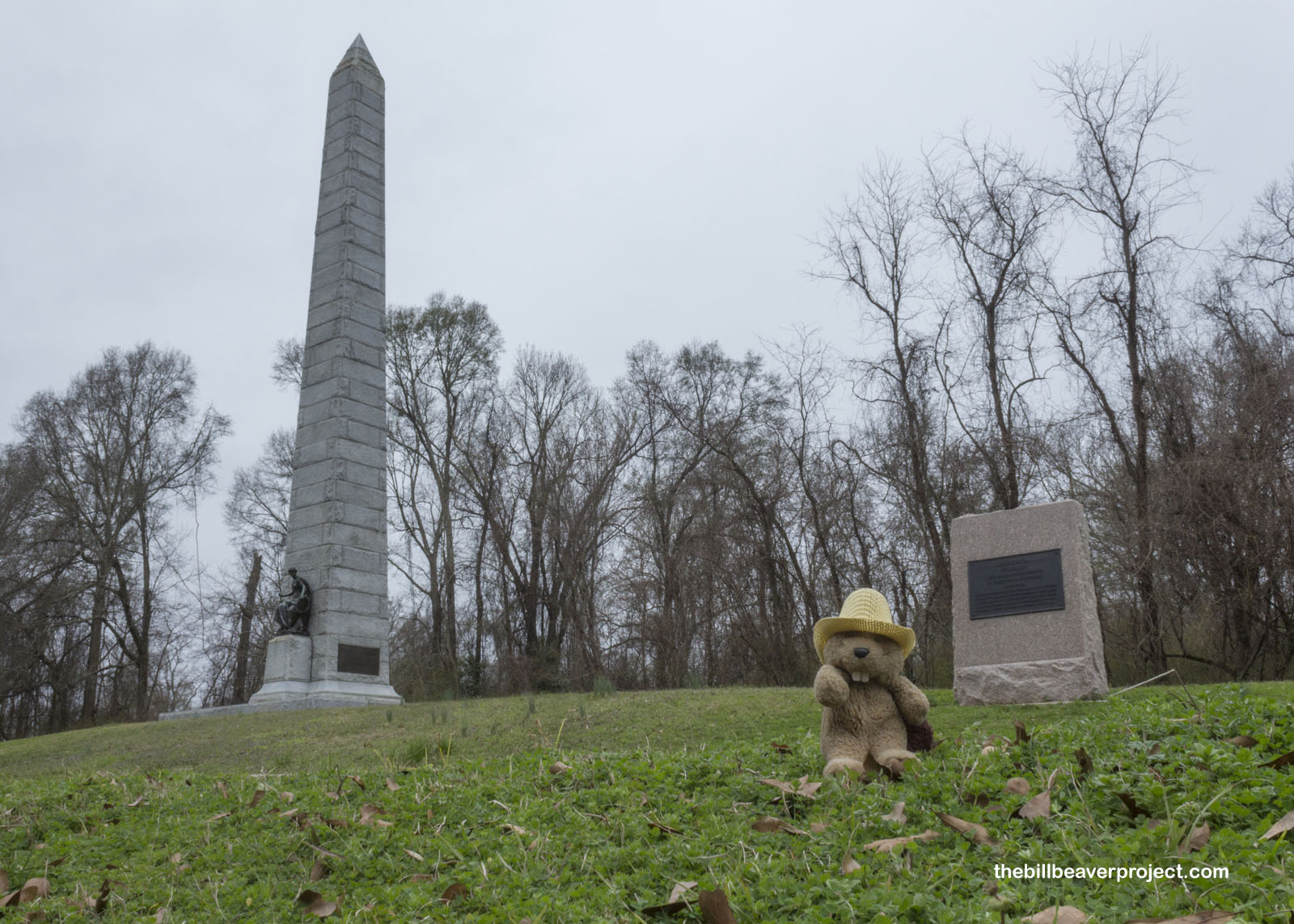 |
Though 156 years have passed since this 18-month campaign, the eeriest part of Vicksburg is that it still looks freshly blasted by cannon fire. There are still deep ravines (actually called shebangs) topped with very thin grass cover, and it’s easy to imagine soldiers crawling through them to gain the high ground!
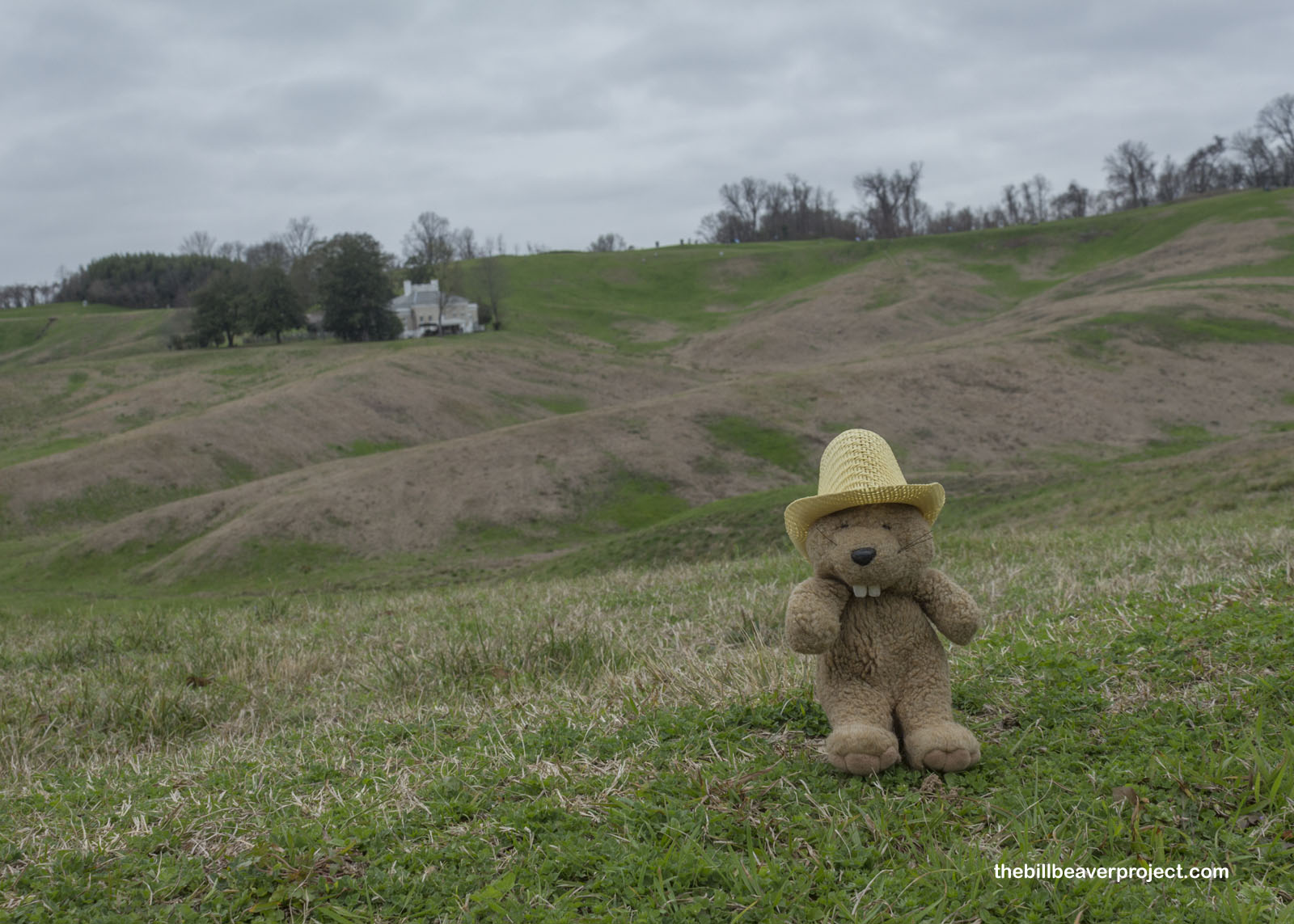 |
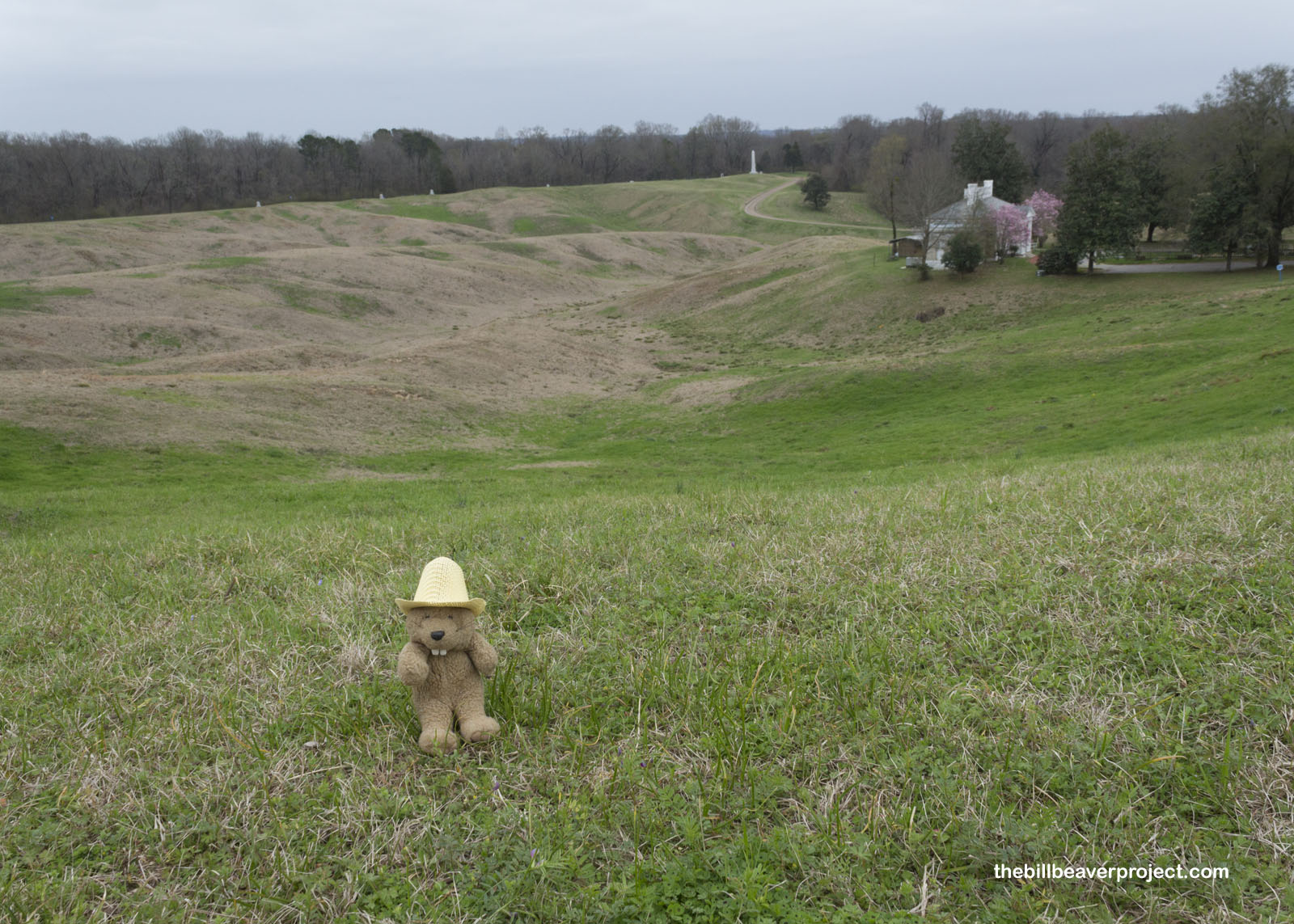 |
At the top of the high ground still stands the home of James and Adeline Shirley, the last building still standing after the battle. Though the retreating Confederate Army ordered all houses to be burned, the soldier who was supposed to burn down the Shirley house was shot before he could set fire to it. So, this small home became a smallpox quarantine hospital for the Union Army instead!
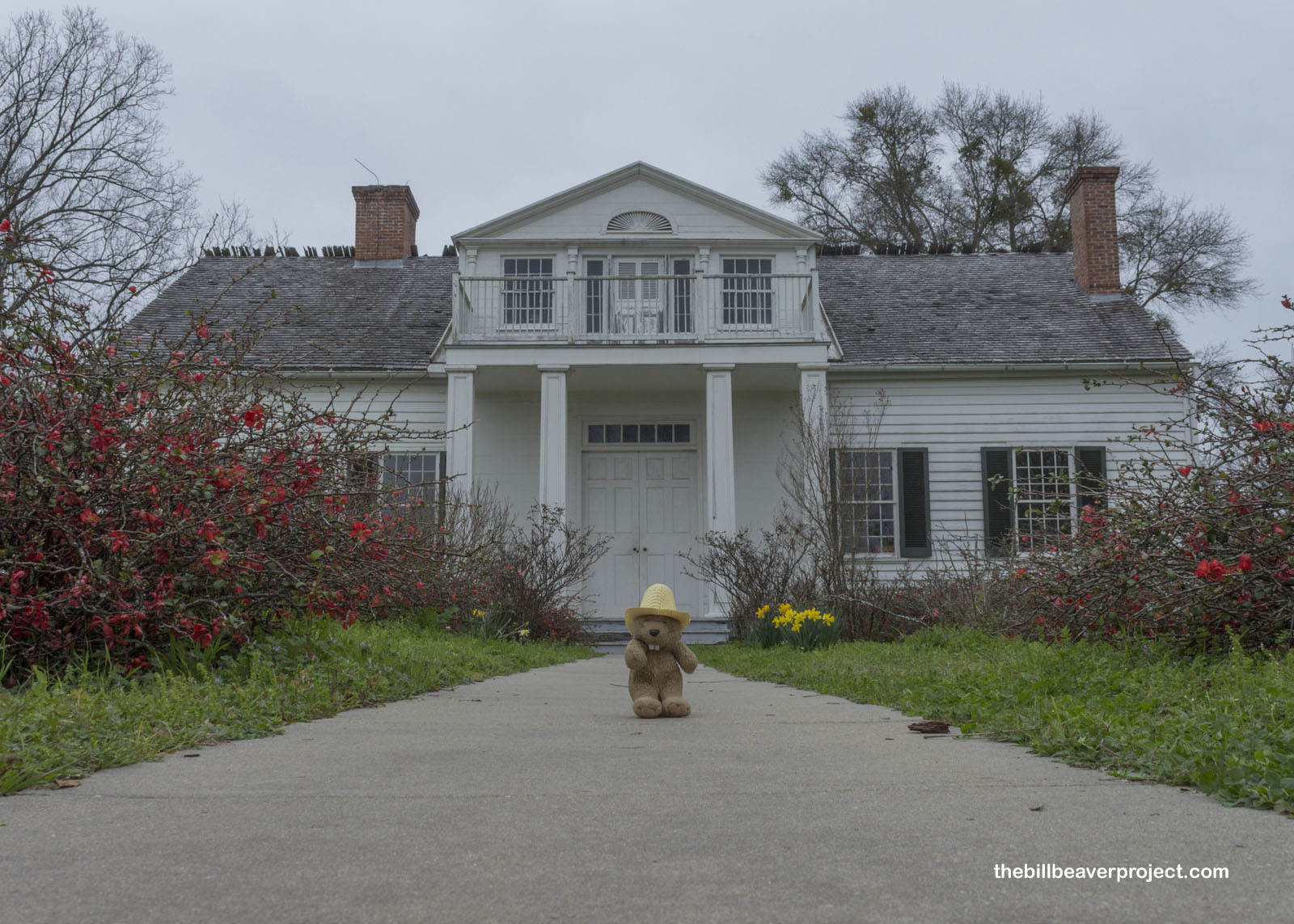 |
Next door to the Shirley House, a magnificent domed memorial commemorates the contributions of soldiers from Illinois. It was designed by Union veteran, W. L. B. Jenney, and features 47 steps (one for each day of the final siege of Vicksburg) and bronze tablets with the names of all 36,325 Illinoisians who participated in the campaign!
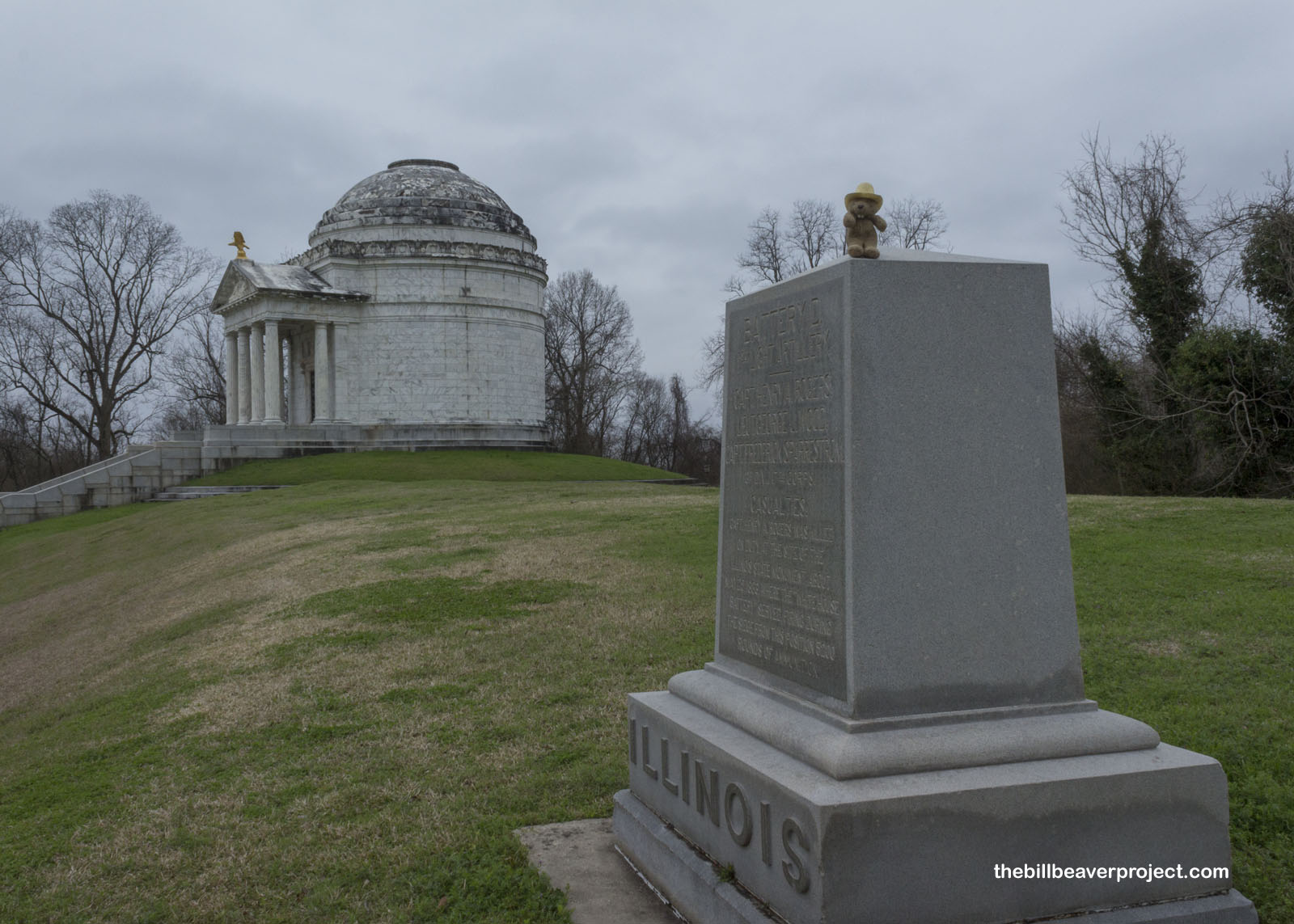 |
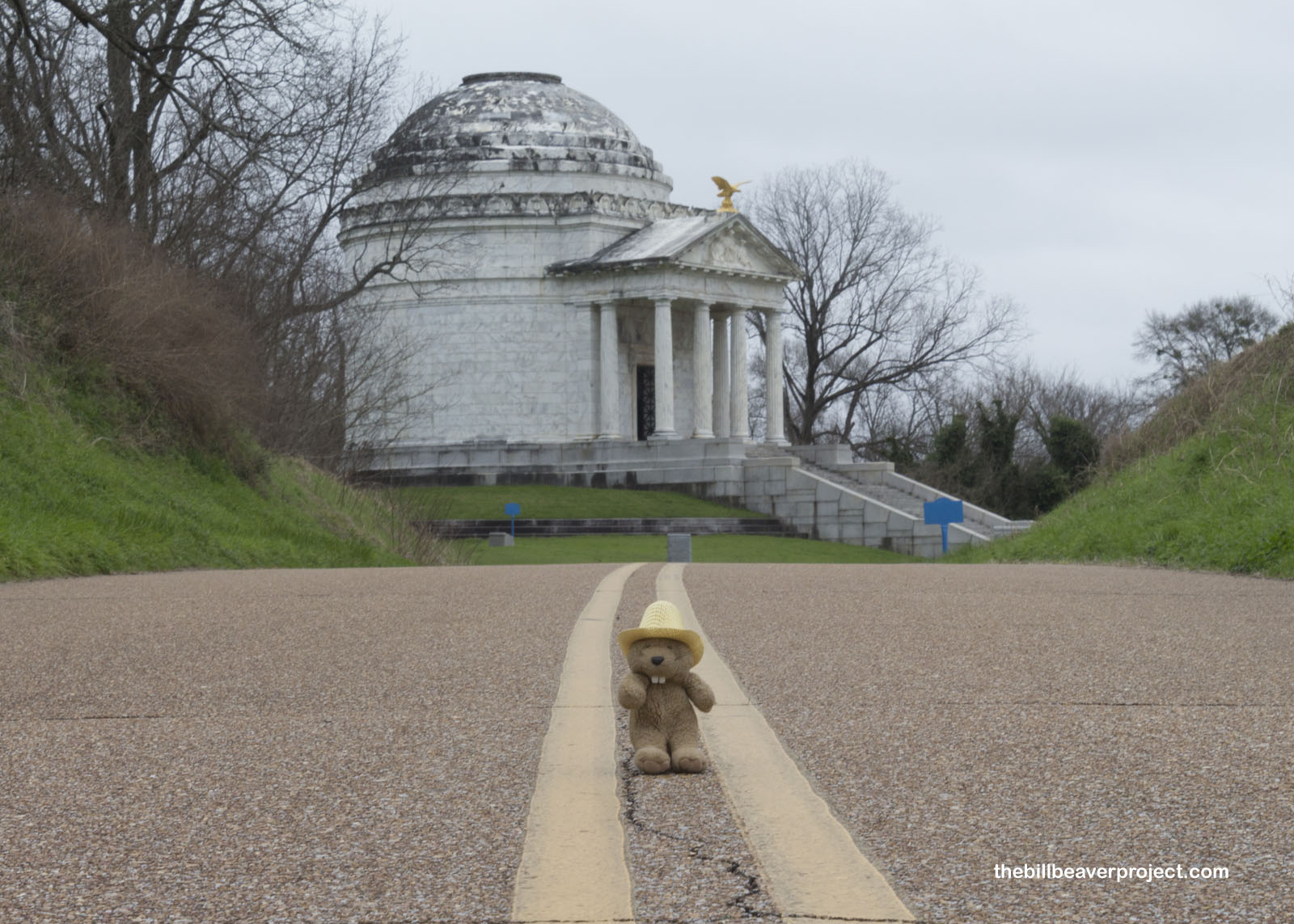 |
It wasn’t all victories for the Union, though. Next to the Illinois Memorial still stands the remnants of the Third Louisiana Redan, where over 24 hours of battle in the hot Mississippi summer, the 45th Illinois Infantry burrowed under the fortifications and blasted them out with black powder, only to find themselves faced with a second wall and a hard retreat.
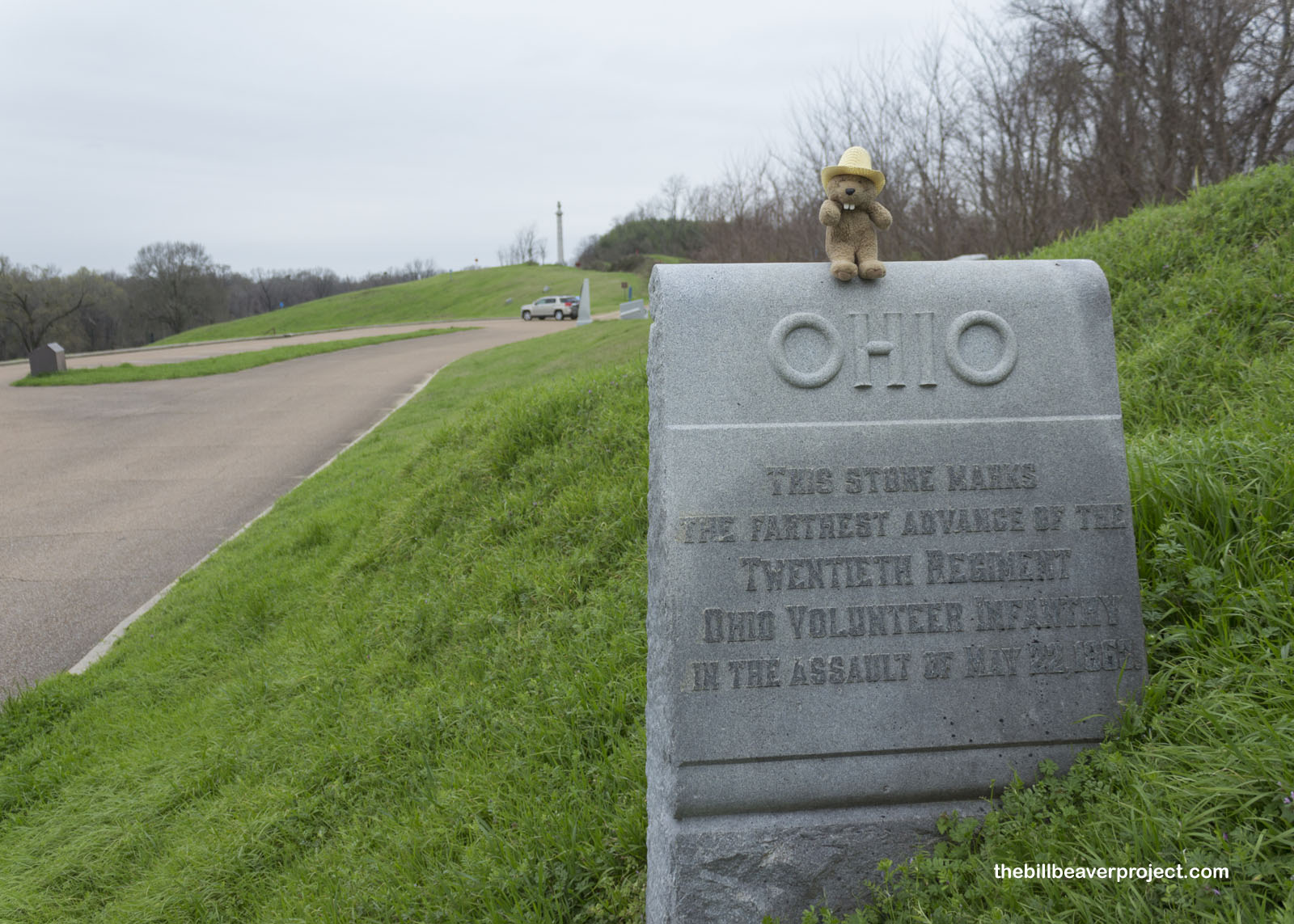 |
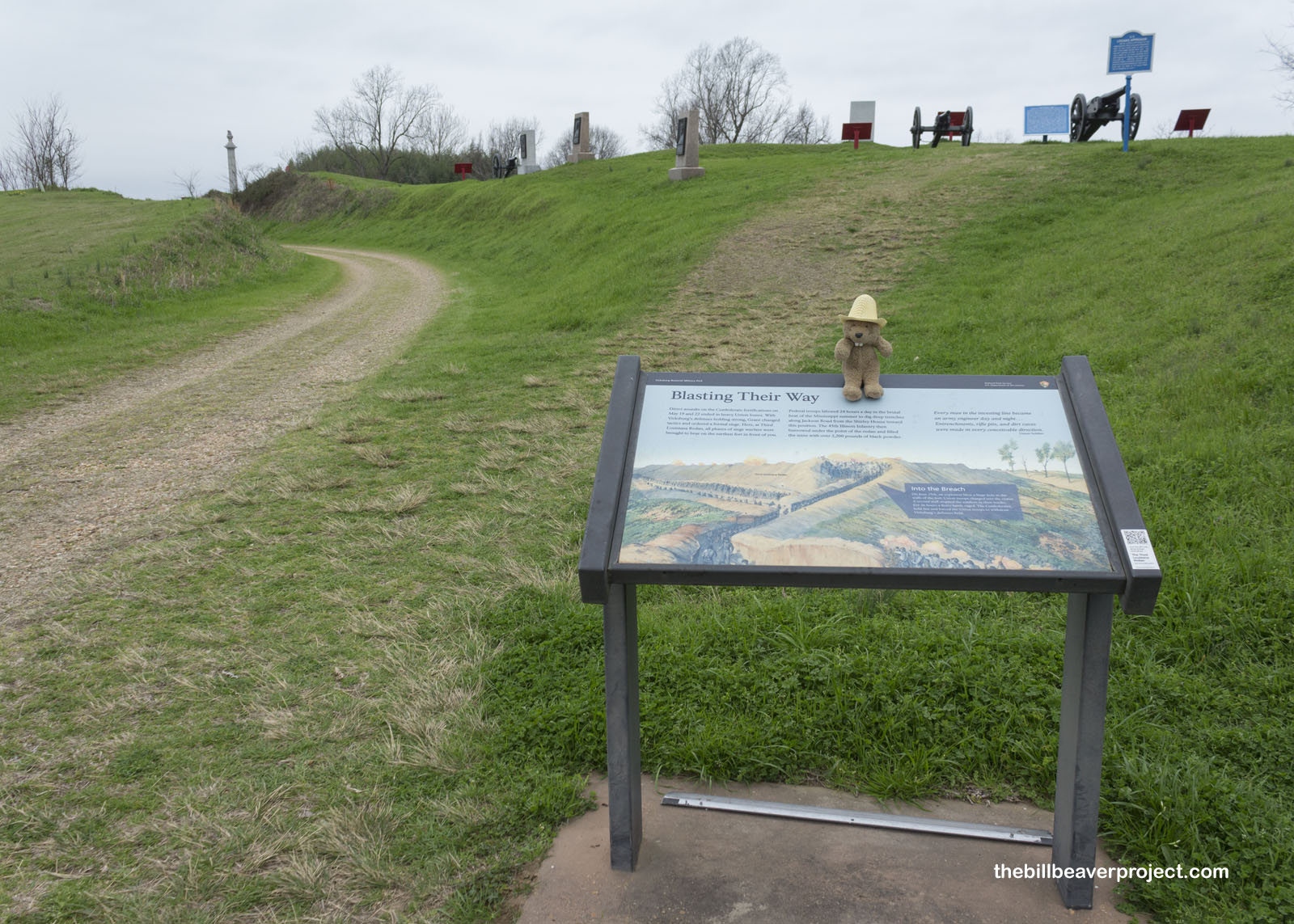 |
Nevertheless, the tunnel-and-bomb tactic was pretty popular in this battle. Brigadier General John M. Thayer planned to blow up a Confederate fort on top of this hill by digging a trench under the cover of bundles of cane called fascines. Though the Confederate army surrendered at Vicksburg on July 4, 1863, before this trench could be complete, the trench itself, and the tunnel where the other soldiers waited out enemy fire, are still intact!
While I was at this stop on the tour, I met a neat family called the Parritts, who gave me some painted rocks. It turns out they give these rocks to travelers they meet and see how far around the world the rocks will go! These will at least make it as far as Los Angeles, but first I’ll follow their recommendation tomorrow and visit their hometown of Clinton!
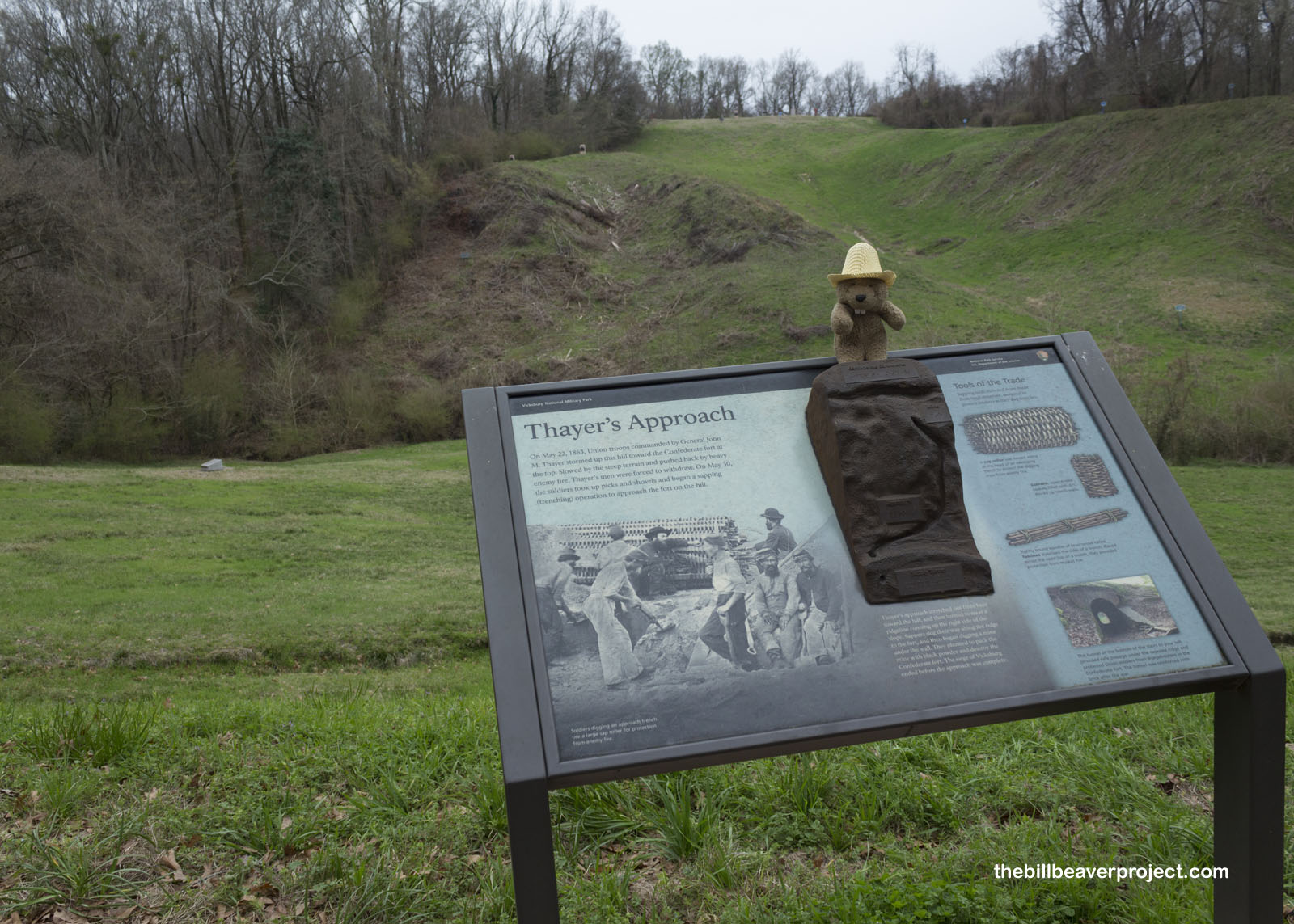 |
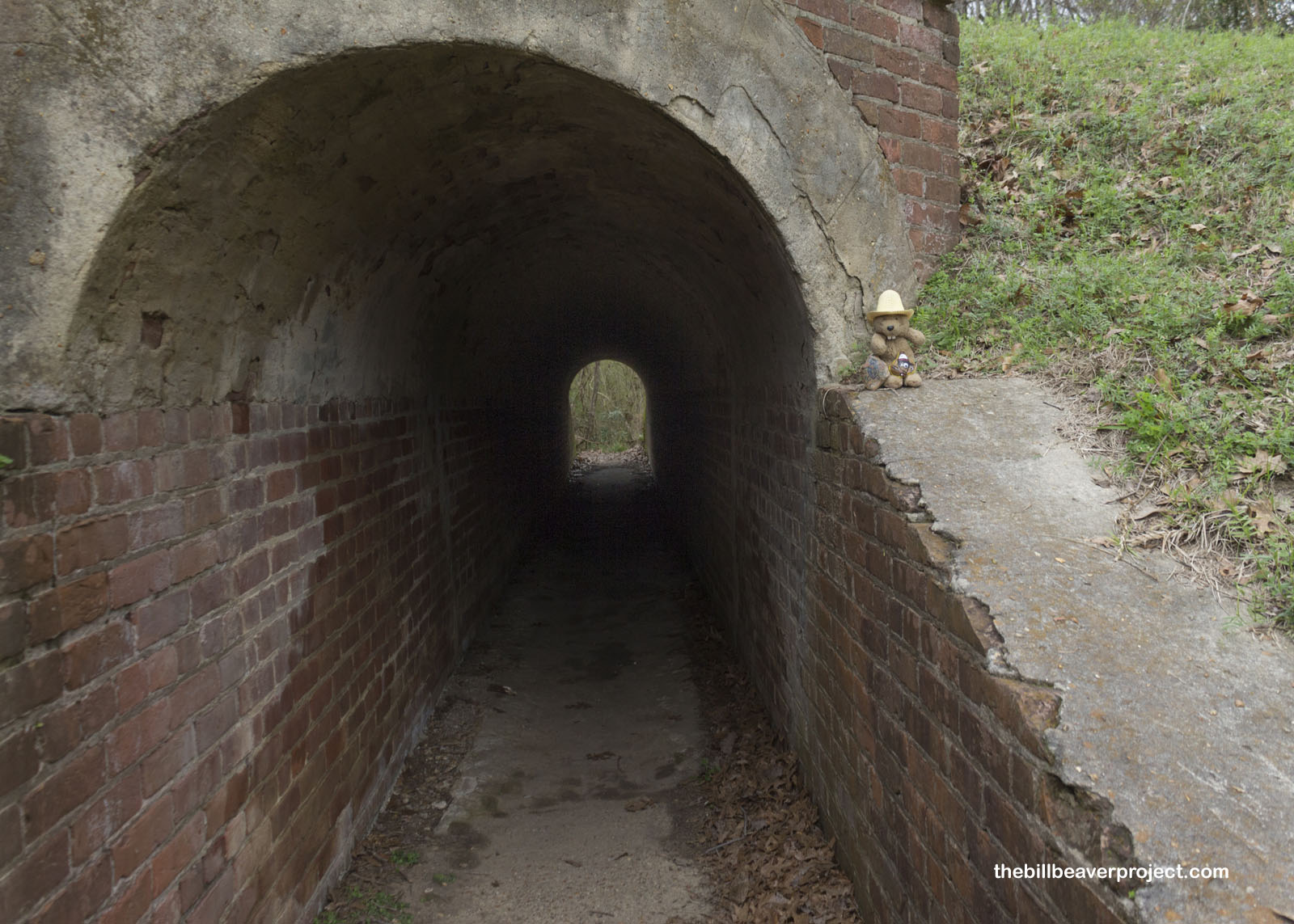 |
My last stop on this tour of Vicksburg took me to the U.S.S. Cairo museum! If you can believe it, this amazing armored vessel had been lying at the muddy bottom of the Yazoo River for 102 years when it was raised, restored, and placed here as a museum in 1964. It was the first armored vessel ever to be sunk by an underwater mine (formerly called torpedoes)!
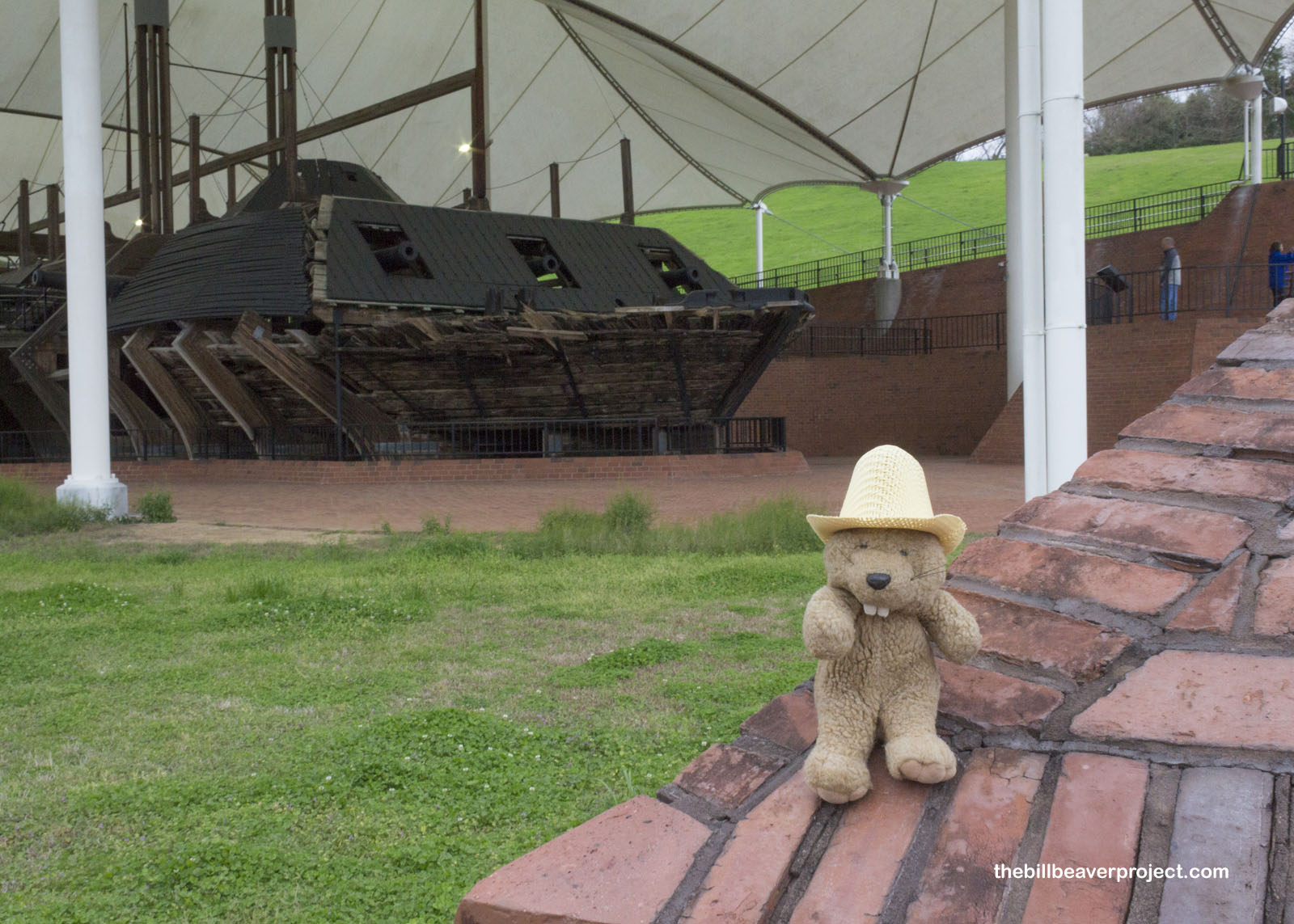 |
Armored vessels were one of the big innovations of naval battle during the Civil War. Among them were such notable names as the Merrimack and the Monitor, but armored vessels patrolled the rivers as well! The Cairo was one of seven such vessels built for river patrol. When launched from Mound City, Illinois, it was only supposed to battle at Plum Point in May 1862 and Memphis in June, but as late as December, Lt. Commander Thomas O. Selfridge, Jr. directed the Cairo back to the Yazoo River to clear out Confederate batteries and torpedoes, only to find his ship blasted by two torpedoes detonated from the bank. It took 12 minutes to sink, and amazingly, everyone on board survived!
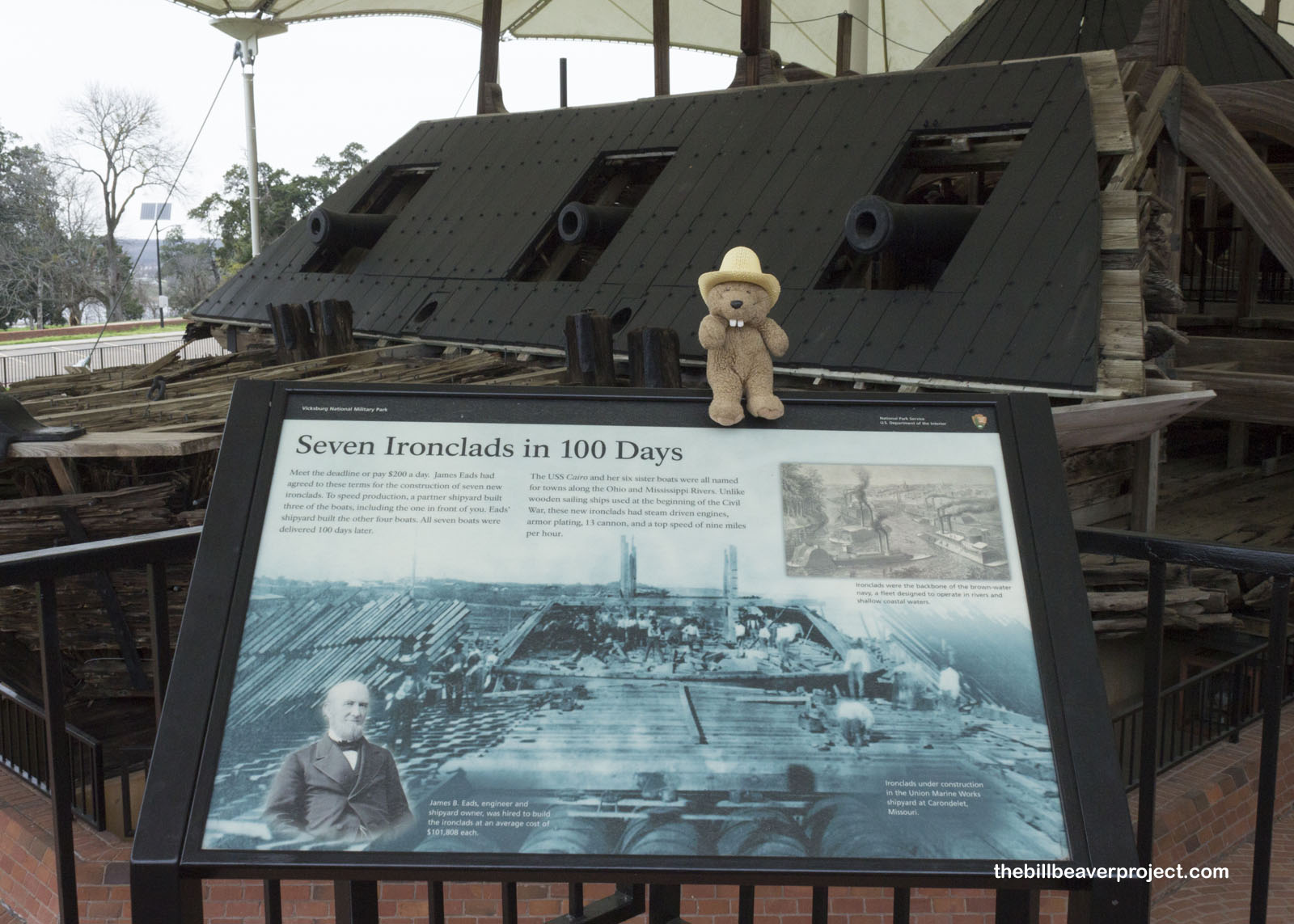 |
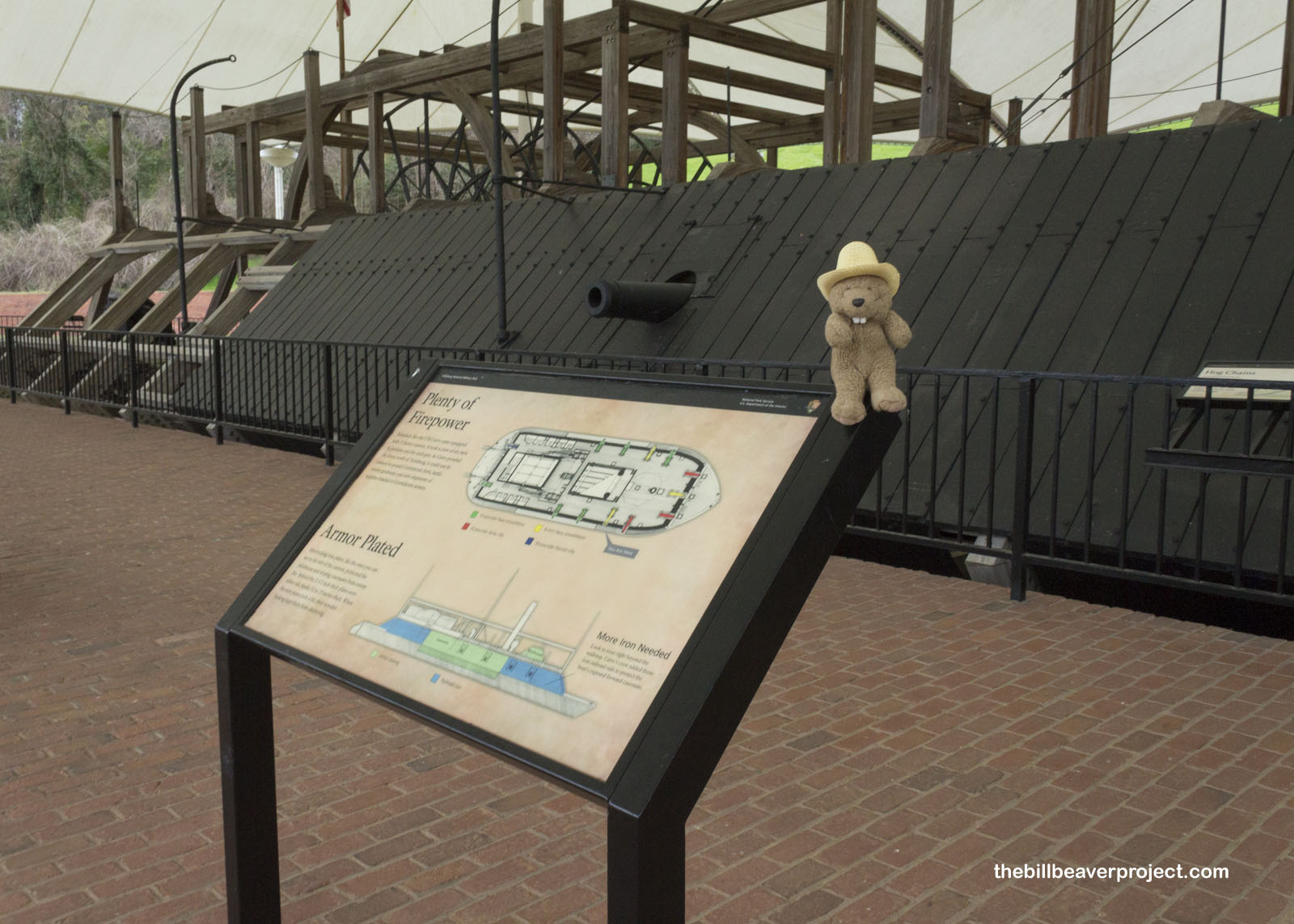 |
As darkness fell over this important battlefield, I was really astonished at the importance of Mississippi in shaping modern America, even after visiting so many historical sites that were judged by their position “west of the Mississippi.” There’s plenty more history and beauty to explore tomorrow, but first, I decided to treat myself to some seafood pasta at Mayflower Cafe in Jackson. If ever you’re in Jackson, don’t Miss it!
See you upriver!

 More 2019 Adventures |
Total Ground Covered: 477.0 mi (767.7 km) |
 Next Day |
